We have been having a lot of fun with cuisenaire rods in Kindergarten! The last time I was with this class, they explored ways to build the orange rod using the other lengths. As the students worked, I heard a lot of “A white and a blue make an orange.” and “Two yellows make an orange.”
After reading the beginning portion of Marilyn Burn’s About Teaching Mathematics, I have equality and use of the equal sign on my mind a lot, especially when reflecting on these particular activities with cuisenaire rods. In the last activity, there was a lot of talk that seemed to be about “making” the orange more so than the two of them being the same as one another in length.
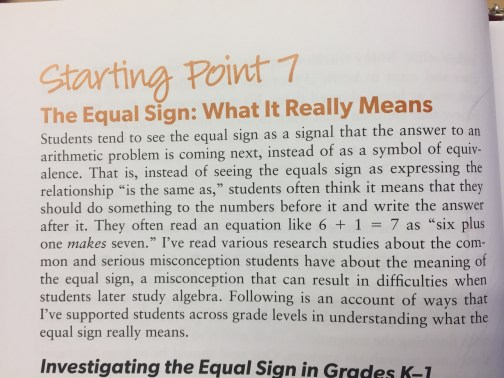
I wondered how we could shift that perspective a bit, or at least add another type of experience to the different rods being of equal length. I grabbed Balancing Act from my Math Reads kit and went to Kindergarten for another round!
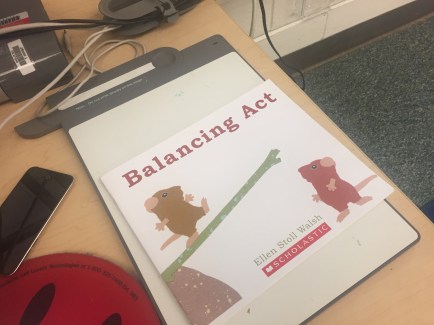
After reading the book aloud, we did a notice and wonder. I was surprised at the ease of use of the word “balance” and the discussion about which different animals balanced one another out in the story.
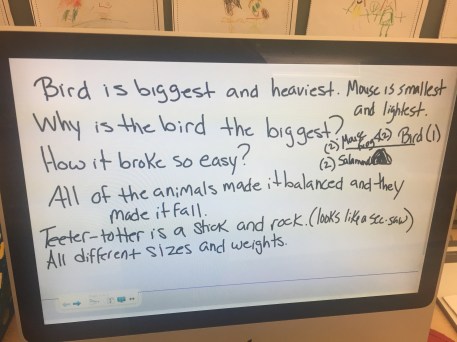
My first direction to the students was to go back to their seats and find rods that would balance with one another. After looking around and seeing some rods on their ends with students creating their own teeter-totter, the teacher and I had to do a quick pause and redirection:)! She quickly grabbed rulers and we asked the students to pretend the ruler was the teeter-totter so that they rods could stay flat on the table, much better!
It was so interesting to see their different approaches! These two boys had different ideas. The one student liked to find rods the same length before putting them on the ruler, while the other put the longer rod on and kept adding smaller ones to the other side. He had to keep putting the longer one over the smaller ones each time, but his truly looked like balancing.

This was so interesting to see multiple rods balancing each side and I especially liked the red rod going vertical on the one ruler.
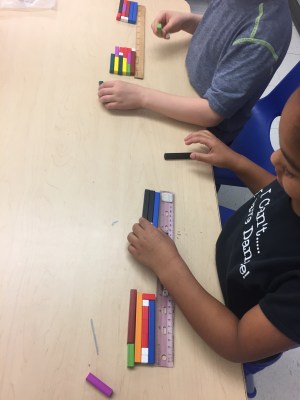
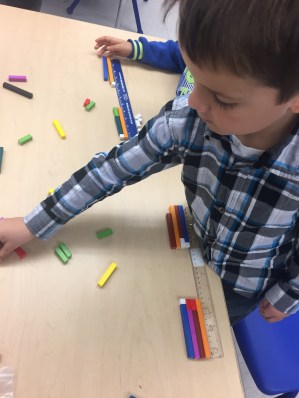
The student below was SO interesting because she was the only one balancing different sizes each time but the opposite sides were still staying balanced at the same time!
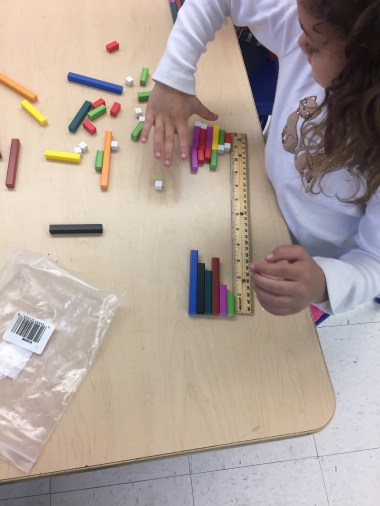
This table worked together so nicely, but started to have a great disagreement when I asked if all of the sides were balanced because the one side is shorter than the rest!

This group made the equal length rods but they was using the ruler to test that all of the sides were the same length:
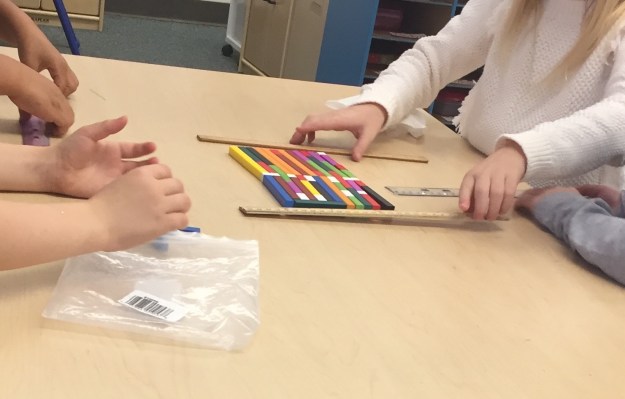
I started thinking it may be a neat activity to ask students to take turns balancing out each other’s cuisenaire rods. For example Player 1 could put a rod or combination of rods on their side of the ruler and then Player 2 must balance out what they did, except using different rods. They could take turns being the first one to place the rod each time. If you wanted to be tricky, they could also remove rods on their turn instead of adding them.
I am wondering, however, how to incorporate notation into this? Would you ask the students to write equations for these rods during this activity?














